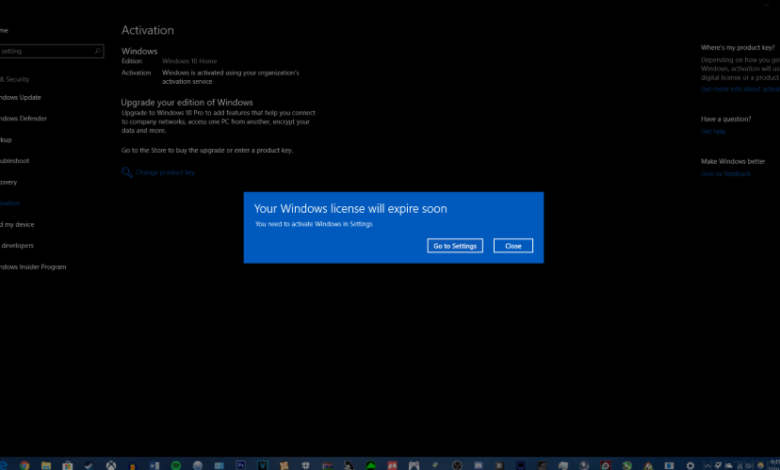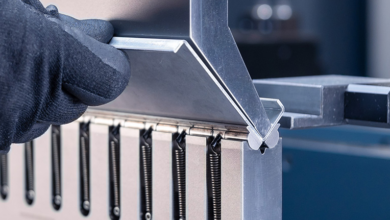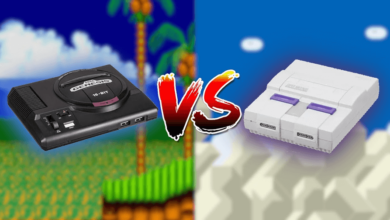The Power of Authentic Activation in Windows 10 License

Understanding the Essence of a Windows 10 License
The Windows 10 license serves as the legal and digital key that allows users to activate, personalize, and enjoy the full functionality of Microsoft’s powerful operating system. It ensures that the copy of Windows installed on a device is genuine, verified, and eligible for updates and support. Without a valid license, users face restrictions such as limited personalization options, frequent activation reminders, and, more importantly, vulnerability to cyber threats. The license is not just a formality; it represents compliance with Microsoft’s terms of service and guarantees access to critical features like security patches and performance updates.
There are various forms of Windows 10 Lizenz tailored to different user needs. The most common are OEM (Original Equipment Manufacturer) licenses, which come pre-installed on brand-new PCs, and Retail licenses, which are sold separately for personal or business use. Volume licenses, on the other hand, cater to organizations that deploy Windows on multiple devices. Each type of license has its specific terms of activation, transfer rights, and support options. Knowing which license type fits your situation is essential to ensure both legality and functionality.
How to Activate and Verify Your Windows 10 License
Activating Windows 10 is a straightforward yet crucial process. Once you install the operating system, activation confirms that your copy is genuine and not used on more devices than permitted by Microsoft’s licensing terms. Activation can be done online or offline depending on the license type. Retail and digital licenses are typically activated online by connecting to Microsoft’s servers, while OEM licenses may automatically activate once the system connects to the internet. A successfully activated Windows 10 ensures uninterrupted access to updates, Microsoft Store applications, and system customization.
To verify the activation status of your Windows 10, Microsoft provides a simple way through the Settings menu. By navigating to “Update & Security” and selecting “Activation,” users can see whether their copy of Windows is activated and, if so, which method was used. A message stating “Windows is activated with a digital license” or “Windows is activated with a digital license linked to your Microsoft account” confirms authenticity. Keeping your digital license linked to your Microsoft account is highly recommended, as it simplifies reactivation in case of hardware changes or reinstallation.
See also: 5 Landscaping Hacks That Save Homeowners Money
The Importance of Genuine Licensing for Security and Performance
Owning a genuine Windows 10 license plays a crucial role in maintaining system integrity and security. Licensed copies receive regular security updates, bug fixes, and improvements directly from Microsoft. These updates are essential in defending against viruses, ransomware, and other cyber threats that frequently target unlicensed or outdated systems. Without a genuine license, users miss out on these critical protections, leaving their systems exposed to potential attacks and data loss. Moreover, genuine licenses ensure compatibility with legitimate applications and drivers, promoting smoother performance and stability.
From a business perspective, using licensed software safeguards organizational credibility and compliance. Unauthorized or pirated software can lead to severe legal penalties, reputational damage, and compromised data security. Companies that operate under legitimate licenses gain the added advantage of Microsoft’s enterprise-grade support, allowing for efficient troubleshooting and access to advanced management tools. Investing in authentic licensing not only protects systems but also enhances overall operational reliability and trust.
Different Types and Uses of Windows 10 Licenses
Microsoft offers several types of Windows 10 licenses to cater to diverse needs. The OEM License is pre-installed by hardware manufacturers and tied to the device’s motherboard, meaning it cannot be transferred to another computer. This makes it ideal for users who purchase new PCs and do not plan to upgrade hardware frequently. Retail Licenses, however, are more flexible. They can be purchased directly from Microsoft or authorized retailers and allow transfer between devices, making them perfect for individuals who frequently build or upgrade their PCs.
For large organizations, Microsoft provides Volume Licensing solutions through programs like Microsoft 365 or Enterprise Agreements. These licenses enable companies to activate and manage hundreds or thousands of devices simultaneously. Additionally, educational institutions can benefit from specialized Academic Licenses, offering discounted or free access to Windows 10 for students and educators. Understanding the distinctions between these licenses helps users and businesses make informed decisions, ensuring compliance and cost efficiency. Each type is designed with specific usage rights and support levels, aligning perfectly with the user’s technical and operational needs.
How to Troubleshoot and Manage Windows 10 License Issues
Despite the reliability of Windows 10 licensing, users sometimes encounter activation issues, especially after hardware changes or system reinstallation. The most common error occurs when a digital license is tied to a motherboard, and the user replaces the motherboard without linking the license to a Microsoft account. In such cases, the system may fail to recognize the license, displaying messages like “Windows is not activated.” Fortunately, Microsoft offers several tools and methods to resolve these issues. The “Activation Troubleshooter” is a built-in feature that automatically detects and resolves common activation errors.
If the troubleshooter does not solve the issue, users can reactivate Windows manually by entering a valid product key or by logging into the Microsoft account associated with the digital license. Microsoft’s support team is also available to assist with license verification and reactivation requests. Keeping a backup of your product key or ensuring your license is linked to your Microsoft account prevents future complications. Additionally, purchasing licenses only from verified sources is essential to avoid counterfeit keys, which may appear legitimate initially but fail upon verification. Proper license management not only ensures compliance but also guarantees peace of mind and seamless computing experiences.
The Role of Digital Transformation in Windows 10 Licensing
The introduction of digital licensing has revolutionized how users activate and manage Windows 10. Unlike traditional keys that required manual entry and physical storage, digital licenses link directly to your Microsoft account or device. This system simplifies reactivation, especially for users who frequently upgrade hardware or reinstall Windows. As long as the license is tied to the same account, reactivation becomes automatic once the device connects to the internet. This evolution represents Microsoft’s shift toward a more user-friendly and cloud-integrated experience, aligning perfectly with the modern digital landscape.
For businesses, digital transformation through centralized licensing offers enhanced control and scalability. IT administrators can manage activations remotely, monitor license usage, and ensure compliance across all company devices. This level of management was nearly impossible with traditional product keys. Moreover, the integration with Microsoft’s ecosystem allows for smoother transitions between Windows versions and seamless upgrades to Windows 11. In essence, digital licensing not only improves convenience but also strengthens overall software governance and lifecycle management.
The Future of Licensing and Windows Ecosystem Evolution
Microsoft’s licensing approach continues to evolve alongside its technology. With the introduction of Windows 11 and future versions, Microsoft is expected to enhance cross-device compatibility and subscription-based models. The growing popularity of cloud computing and hybrid work environments demands licenses that adapt to dynamic user needs. Subscription-based licensing, like Microsoft 365, provides continuous updates, better flexibility, and integrated cloud services, representing the next step in the evolution of Windows licensing.
The future of Windows licensing is centered on personalization, security, and sustainability. As Microsoft moves toward a unified digital ecosystem, users can expect licenses that automatically adjust to devices, cloud profiles, and regional regulations. This forward-looking approach ensures that genuine Windows users will always benefit from innovation, security, and long-term value. Understanding and maintaining an authentic Windows 10 license today lays the foundation for a seamless transition to the next generation of Windows technology, empowering both individuals and enterprises in the ever-changing digital era.



